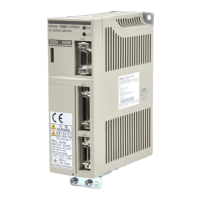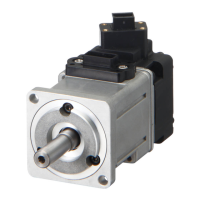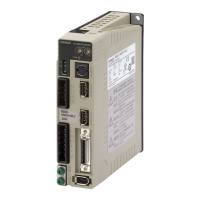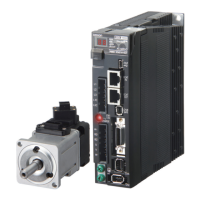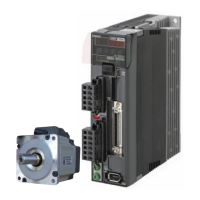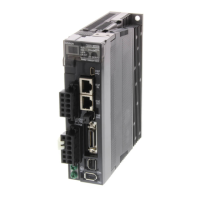2-107
Item 200 V ACUnitItem
R88M
-W5K510
H
R88M
-W4K010
H
R88M
-W3K010
H
R88M
-W2K010
H
R88M
-W1K210
H
R88M
-W90010H
R88M
-W60010H
R88M
-W30010H
Unit
Item
R88M
-W5K510
T
R88M
-W4K010
T
R88M
-W3K010
T
R88M
-W2K010
T
R88M
-W1K210
T
R88M
-W90010T
R88M
-W60010T
R88M
-W30010T
Unit
Brake
speci-
Brake in-
ertia
kgSm
2
(GD
2
/4)
2.1 × 10
–4
2.1 × 10
–4
2.1 × 10
–4
8.5 × 10
–4
8.5 × 10
–4
8.5 × 10
–4
8.5 × 10
–4
8.5 × 10
–4
fica-
tions
Excitation
voltage
V 24 V DC ±10%
Power
consump-
tion (at
20°C)
W 9.85 9.85 9.85 18.5 18.5 18.5 23.5 23.5
Current
consump-
tion (at
20°C)
A 0.41 0.41 0.41 0.77 0.77 0.77 0.98 0.98
Static fric-
tion
torque
NSm
4.41 min. 12.7 min. 12.7 min. 43.1 min. 43.1 min. 43.1 min. 72.6 min. 72.6 min.
Attraction
time (See
note 3.)
ms 180 max. 180 max. 180 max. 180 max. 180 max. 180 max. 180 max. 180 max.
Release
time (See
note 3.)
ms 100 max. 100 max. 100 max. 100 max. 100 max. 100 max. 100 max. 100 max.
Backlash 1° (reference value)
Rating – Continuous
Insulation
grade
– Type F
Note 1. *The values for items marked by asterisks are the values at an armature winding temperature
of 100°C, combined with the Servo Driver. Other values are at normal conditions (20°C, 65%).
The momentary maximum torque shown above indicates the standard value.
Note 2. The brakes are the non-excitation operation type (released when excitation voltage is ap-
plied).
Note 3. The operation time is the measured value (reference value) with a surge killer (CR50500, by
Okaya Electric Industries co. LTD) inserted.
Note 4. The allowable radial and thrust loads are the values determined for a service life of 20,000
hours at normal operating temperatures.
Note 5. The value indicated for the allowable radial load is for the position shown in the following dia-
gram.
End of Servomotor shaft
Radial load
Thrust load
Note 6. Applicable Load Inertia
1) The drivable load inertia ratio (load inertia/rotor inertia) changes depending on the mechanical con-
figuration being driven and its rigidity. Highly rigid machines can operate with a large load inertia.
Select a Servomotor and verify operation.
2) If the dynamic brake is used frequently with a large load inertia, it may lead to burnout of the dynamic
brake resistor. Do not repeatedly turn the Servo ON and OFF with the dynamic brake enabled.
Standard Models and Specifications Chapter 2
